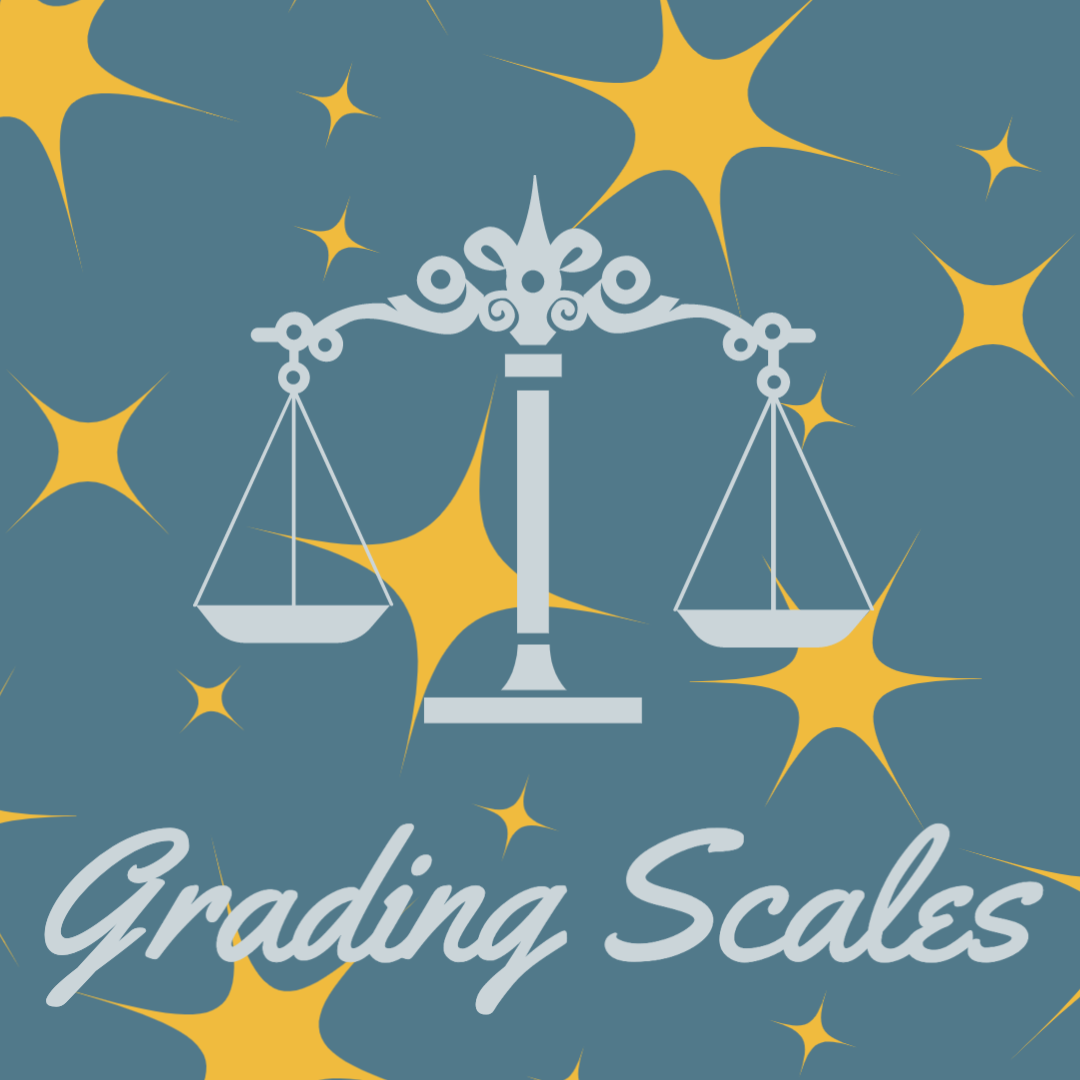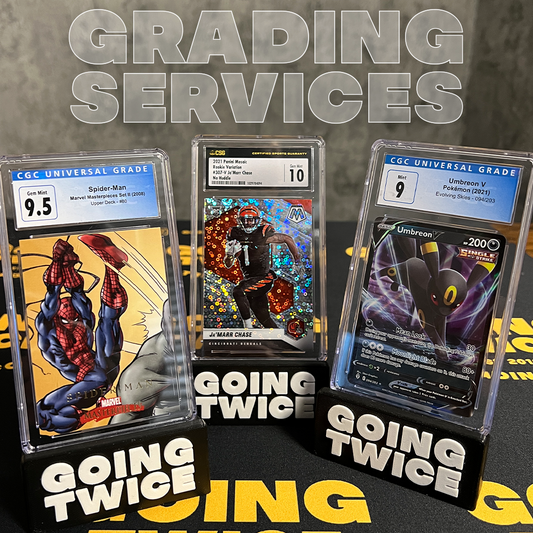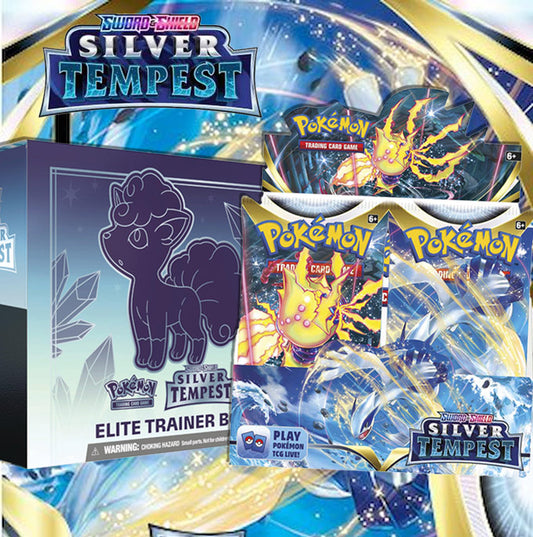
How Card Grading Works - Pokemon Edition
Share
If you're considering grading your Pokemon cards, it's important to understand the criteria that the major grading companies (PSA, CGC, and BGS) use in evaluating and grading cards. To give you a complete understanding of how the grading process works, we'll break down each criteria and walkthrough how to assess your card. With an understanding of each criteria, you can make an educated decision about whether or not to grade your cards.
The top grading companies (PSA, CGC, and BGS) all use the same four primary criteria for grading. These four areas are fairly standard in how they are assessed but we'll make note of any differences where applicable. When receiving a single grade (no sub-grades), a card is assessed on these four areas generally and then assigned an overall grade. For grading with sub-grades, the card will receive a grade on each of these areas as well as an overall grade. All three of these grading companies use a standard 10 point grading scale (more on this to come in a later article). In another article, we will address "Qualifiers" or error designations that may get added to a grade for various reasons.
Centering
Cards are assessed on their centering for both the front and the back of the card. The centering is based on the registration of the card's design within the frame of the card-stock as intended by the original design, basically looking at the border of the card both top to bottom and side to side. To get a PSA 10 grade (for centering), the front centering needs to be within 55/45 (ratio side to side and top to bottom) to 60/40 and 75/25 on the backside of the card. BGS assigns a Gem-mint 10 grade if the center is 50/50 on the front and 60/40 or better on the back. CGC centering is just as strict and inline with BGS. In all cases, the centering on the front outweighs the centering on the back for obvious reasons. Pokemon cards that have the traditional yellow border on the front and blue border on the back make it a little bit easier to gage the centering. Newer full art cards that lack a yellow border definitely make it more challenging to judge the front centering.



Corners
The next area that is assessed in grading is the corners of the cards - both the visual and structural integrity of the card. For anyone who has opened packs, knows the pain of pulling amazing cards that have banged up corners. The corners are vulnerable to how the pack or booster box is handled as well as the original cutting of the cards at the factory. If the blade is dull or catches on the sheet, it can destroy the corners leaving even 'pack fresh' cards with poor corner grading. For cards with the traditional yellow (front) and blue (back) borders, you want to look for any whitening (white spots) on the corners. The card grader will be examining the corners under magnification so it is important to look at the corners very closely.


Edges
The edges of the card will be graded based on the visual and structural integrity of the edges. This is similar to the corners in that you want to look for any whitening or issues resulting from the cutting (manufacturing) of the cards. You can also get separation around the edges where the layers of the cardboard start to pull apart. Both the corners and the edges need to be carefully watched after as you handle your cards and especially when putting them into or out of sleeves, top loaders, card savers, or binders. Any time the card 'catches' on the edge of something, it make take a tiny chunk out of the edge or corner leaving whitening.

Surface
The final grading criteria is the surface of the card including both the back and front of the card. Things that affect the surface grade are marks of any kinds (stains, ink, etc), scratches, dents, and creases. Because the this criteria literally covers so much 'surface' area on the card, it is really important to closely examine all the surface of the card for imperfections. While all four criteria make the case for careful handling of your cards from pack to grading, the surface is especially vulnerable to how you handle the cards. A common surface imperfection is tiny dents made from your fingernails as you pull cards out of packs or put them into or out of binders or sleeves. Surface issues can also be the result of the manufacturing process specifically on the holofoil surface. You will sometimes have surface scratches or print lines (vertical or horizontal lines in the holo). The entire front surface of a holo card are vulnerable to noticeable scratches and nicks because the holo layer covers the entire front of the card and 'shines' through when the top surface is scratched. When assessing the surface of your card, look carefully over the entire card (front and back) under a strong light and from multiple angles.

Other Criteria
Aside from these four primary grading criteria, one also has to consider the overall look of the card which is a very subjective thing that cannot easily be put into words. For example, if the card is sun-faded from sitting in a card shop display case for 20 years, it will definitely affect the grade. Also think about how 'bright' a holo card looks coming straight out of a pack versus a card that has been in a binder for many years. This is why pack fresh cards have a better chance of achieving a higher grade and why vintage packs demand a premium price.
Grading Scales
Let's take a look at the specific grading scales for PSA, CGC, and BGS to see how these areas factor into the final grade of a card. Look for information in an upcoming article about how to assess whether a card is worth grading or not. In some cases, rarity or collectibility of the card will outweigh the condition of the card. And in other cases, only a card in pristine condition is worth the time and expense of grading.
PSA Grading Scale
You can find more information on PSA's Grading Standards page.
| PR 1 - Poor | A PSA Poor 1 card will exhibit many of the same qualities of a PSA Fair 1.5 card although the defects may have advanced to such a serious stage that the card’s eye appeal has completely vanished. A card with this designation may also be missing one or two small pieces (corners) and may exhibit major creasing. In addition, extreme discoloration or even dirtiness might make even it difficult to simply identify the issue. |
| FR 1.5 - Fair | A PSA Fair 1.5 card, denoting a half-grade, shows extreme wear possibly even affecting the framing of the picture. The surface of the card will no doubt show advanced signs of wear including scuffing, scratching, chipping and staining. The picture on the card may possibly be out of register and its borders may have become brown and dirty. To receive a Fair grade, a card must be fully intact, which means no missing pieces whatsoever (major tear or missing corner, etc.). Centering must be 90/10 or better on the front and back. |
| GOOD 2 - Good | A PSA Good 2 card’s corners will show accelerated rounding and surface wear is obvious. There might also be several creases on the card as well as scratching, scuffing, light staining or even chipping on the obverse. As for the card’s original gloss, it might be completely gone. The card may also show considerable discoloration. Centering must be approximately 90/10 or better on the front and back. |
| VG 3 - Very Good | A PSA VG 3 card reveals some rounding of the corners, although nothing extreme. Some surface wear is evident as well as light scuffing and/or scratches. The focus on the card may be somewhat off-register and much of the card’s original gloss may be lost. Other elements that may lead to a grade of VG 3 include a slight stain may be showing on the obverse as well as wax staining on the reverse. Centering must be approximately 90/10 or better on the front and back. |
| VG-EX 4 - Very Good-Excellent | A PSA VG-EX 4 card’s corners may be slightly rounded and surface wear is noticeable. The card may show light scuffing or scratches with some original gloss still intact. Borders may be slightly off-white and light creasing visible. Centering must be 85/15 or better on the front and 90/10 or better on the back. |
| EX 5 - Excellent | On a PSA EX-5 card, minor rounding of the corners is becoming evident. Surface wear or printing defects are more visible. There may be minor chipping on edges. Loss of original gloss will also be more apparent. Focus of picture may be slightly out of register. Several light scratches may be visible upon close inspection but don’t detract from the appeal of the card. Card may show some off-whiteness of borders. Centering must be 85/15 or better on the front and 90/10 or better on the back. |
| EX-MT 6 - Excellent-Mint | A PSA EX-MT 6 card may have visible surface wear or a printing defect which does not detract from its overall appeal. A very slight scratch may be detected only upon close inspection. Corners may have slightly graduated fraying and picture focus may be slightly out-of-register. Card may show some loss of its original gloss, may have minor wax stain on reverse, may exhibit very slight notching on edges and may also show some off-whiteness on borders. Centering must be 80/20 or better on the front and 90/10 or better on the reverse. |
| NM 7 - Near Mint | A PSA NM 7 is a card showing slight surface wear visible only upon close inspection. There may be slight fraying on some corners. Picture focus may be slightly out-of-register although a minor printing blemish is acceptable. Slight wax staining is acceptable on the back of the card only. Most of the original gloss is retained. Centering must be approximately 70/30 to 75/25 or better on the front and 90/10 or better on the reverse. |
| NM-MT 8 - Near Mint-Mint | A PSA NM-MT 8 is a super high-end card that appears Mint 9 at first glance, but upon closer inspection can exhibit one or more of the following: a very slight wax stain on the reverse, slightest fraying at one or two corners, a minor printing imperfection and/or slightly off-white borders. Centering must be approximately 65/35 or 70/30 or better on the front and 90/10 or better on the reverse. |
| MINT 9 - Mint | A PSA MINT 9 is a superb condition card that exhibits only one of the following minor flaws: a very slight wax stain on the reverse, a minor printing imperfection or slightly off-white borders. Centering must be approximately 60/40 to 65/35 or better on the front and 90/10 or better on the reverse. |
| GEM-MT 10 - Gem Mint | A PSA GEM-MT 10 is a virtually perfect card, from its four sharp corners and no creasing to its sharp focus and full original gloss intact. A card that earns this distinction must be free of any staining, though allowances are made for slight printing imperfections if they don’t impair the card’s overall appeal. The image must be centered on the card within a tolerance not to exceed 55/45 to 60/40 percent on the front and 75/25 percent on the reverse. |
CGC Grading Scale
You can find more information on CGC's grading scales page.
|
1 - Poor |
An extensively damaged card with large tears and other extreme defects. |
| 1.5 - Fair | A damaged card with poor eye appeal and extreme defects. |
| 2 - Good | An extremely played card that has poor detail and an accumulation of major defects. |
| 2.5 - Good+ | A card that exhibits major-to-extreme defects with heavy creases and significant discoloration. |
| 3 - Very Good | A heavily played card with several major defects as well as some moderate defects. There will be no tears, however. |
| 3.5 - Very Good+ | A heavily played card with a couple of major defects. There will be no tears, however. |
| 4 - VG/EX | A heavily played card with several moderate defects including creases. |
| 4.5 - VG/EX+ | A card with obvious signs of play with loss of sheen and whitening extending the entire border. |
| 5 - Excellent | A played card with moderate and small defects. It may also have a light crease. |
| 5.5 - Excellent+ | A moderately played card. It will have moderate and small defects. |
| 6 - EX/NM | An attractive card that is still bright. It will have a moderate defect and a number of small defects. |
| 6.5 - EX/NM+ | A slightly played card with minor scuffing, indentations, soiling or fading. |
| 7 - Near Mint | A slightly played card that has strong eye appeal but has a moderate defect or a number of small defects. |
| 7.5 - NM+ | A well-preserved card with a moderate defect or a number of small defects. |
| 8 - NM/Mint | A well-preserved card with at least average centering and small-to-moderate handling defects. |
| 8.5 - NM/Mint+ | A card with at least average-to-above-average centering. The card will show small handling defects. |
| 9 - Mint | The card shows at least above-average centering and only a few minor manufacturing or handling defects. |
| 9.5 - Gem Mint | The card will have excellent centering and exhibit only negligible handling or manufacturing defects. |
| 10 - Pristine | A Pristine 10 card must have perfect centering and no evidence of any manufacturing or handling defects. Corners will appear perfect to the naked eye and Gem Mint under 10x magnification. The surface is free of print spots and should also display perfect gloss. |
| 10 - Perfect |
A Perfect 10 is a card that has received the grade of Pristine 10 with all four sub-grades being 10. This “quad 10” is the best a card can be. It has no post-production flaws under 10x magnification in all four sub-grades. |
BGS Grading Scale
You can find out more information on BGS's grading scale page.
| 1 - Poor | Centering: 100/0 or offcut on front or back. Heavy diamond cutting is allowed. Corners: Heavily rounded or heavily notched with noticeable layering. Edges: Destructive chipping, notching or layering. Surface: Severe print spots. Heavy creases. Severe color or focus imperfections. Heavy border discoloration. Severe stains. No original gloss. Heavy scuffing or a severe tear. |
| 2 - Good | Centering: 90/10 both ways or better on front. 100/0 or offcut on back. Noticeable diamond cutting is allowed. Corners: Noticeably rounded or heavily notched corners with moderate layering. Edges: Severely chipped, notched or layered. Surface: Severe print spots. Noticeable creases. Noticeable color or focus imperfections. Noticeable border discoloration. Heavy wax stains. Moderate ink mark or tape stain. A surface devoid of gloss. Noticeable scuffing or a noticeable tear. |
| 3 - Very Good | Centering: 85/15 both ways or better on front. 100/0 or better on back. Moderate diamond cutting is allowed. Corners: Slightly rounded or noticeably notched corners with slight layering is allowed. Edges: Heavy notching, moderate layering or heavy chipping is allowed. Surface: Heavy print spots. Very minor creases. Noticeable color or focus imperfections. Noticeable border discoloration. Noticeable wax stains. Light ink mark or tape stain. Very little surface gloss. Minor scuffing or a very minor tear. |
| 4 - Very Good/Excellent | Centering: 80/20 both ways or better on front. 100/0 or better on back. Moderate diamond cutting is allowed. Corners: Slight notching or layering, or moderate dings are allowed. Edges: Readily chipped or notched and/or slightly layered. Surface: Heavy print spots. Hairline creases. Moderate color or focus imperfections. Moderate border discoloration. Moderate wax stains. Very light ink mark or tape stain. A good deal of gloss lost from surface. Very minor scuffing or an extremely subtle tear in the form of a touch of broken surface paper. |
| 5 - Excellent | Centering: 75/25 both ways or better on front. 95/5 or better on back. Slight diamond cutting is allowed. Corners: Four fuzzy corners, a touch of notching or a minor ding is allowed. Edges: Noticeable roughness - but no layering. Very slight notching or noticeable chipping is allowed. Surface: Noticeable print spots. Minor color or focus imperfections. Minor border discoloration. Minor wax stains or very light ink mark. Some gloss lost from surface with minor scratches, but devoid of scuffing. |
| 6 - Excellent Mint | Centering: 70/30 both ways or better on front. 95/5 or better on back. Slight diamond cutting is allowed. Corners: Fuzzy corners, but free of dings and fraying. Edges: Moderate roughness, moderate chipping or minor notching is allowed. Surface: Noticeable print spots. Minor color or focus imperfections. Minor border discoloration and color or focus imperfections. Minor wax stains or extremely subtle ink marks. Relatively solid gloss with minor scratches, but devoid of scuffing. Noticeable metallic print lines. |
| 7 - Near Mint | Centering: 65/35 both ways or better on front. 90/10 or better on back. Very slight diamond cutting is allowed. Corners: Very minor wear on two or three corners is allowed. Edges: Slight roughness, minor chipping or very minor notching is allowed. Surface: A few noticeable print spots or minor speckling is allowed. Minor color or focus imperfections. Very minor border discoloration. A very minor wax stain on back. Solid gloss with a few minor scratches detectable upon close inspection. A few metallic print lines. |
| 8 - Near Mint/Mint | Centering: 60/40 both ways or better on front. 80/20 or better on back. Corners: Sharp to the naked eye, but slight imperfections allowed under close examination. Edges: Relatively smooth borders. Specks of chipping visible to the naked eye are allowed. Surface: A few minor print spots. Very minor color or focus imperfections. Solid gloss with very minor scratches detectable only upon close inspection. Or a subtle metallic print line. |
| 9 - Mint | Centering: 55/45 both ways on front. 70/30 or better on back. Corners: Mint upon close inspection. A speck of wear is allowed under intense scrutiny. Edges: Virtually Mint to the naked eye. Unobtrusive specks of chipping on the borders are allowed. Surface: A handful of printing specks or one minor spot. Very minor focus or color imperfections. Clean gloss with one or two tiny scratches barely noticeable to the naked eye. One faint, unobtrusive metallic print line is allowed. |
| 9.5 - Gem Mint | Centering: 50/50 one way, 55/45 the other on front. 60/40 or better on back Corners: Mint to the naked eye, but slight imperfections allowed under magnification. Edges: Virtually Mint to the naked eye. A speck of wear is allowed under intense scrutiny. Surface: A few extremely minor print spots, detectable only under intense scrutiny. Deep color, devoid of registration or focus imperfections. Perfect gloss, devoid of scratches and metallic print lines. |
| 10 - Pristine | Centering: 50/50 all around on front. 60/40 or better on back. Corners: Perfect to the naked eye and Mint under magnification. Edges: Perfect to the naked eye and virtually free of flaws under magnification. Surface: No print spots. Flawless color, devoid of registration or focus imperfections. Perfect gloss, devoid of scratches and metallic print lines. |
As an Authorized CGC Dealer, Going Twice is here to help you with your grading process. Find out more information on our Grading Information page.



